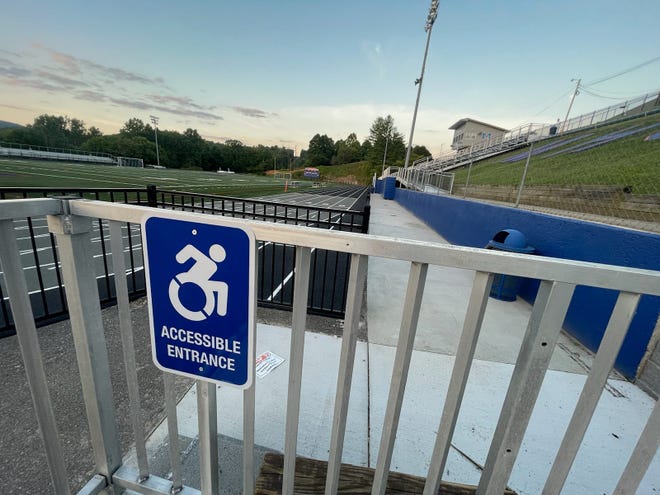Thursday marks 34 years since President George H. W. Bush signed the Americans with Disabilities Act, guaranteeing equal protection for people with disabilities.
The ADA is modeled on the Civil Rights Act of 1964 and provides equal access to government services, schools, buildings, private employers and commercial establishments, but some disability rights activists say the law doesn’t go far enough to protect people with disabilities.
“According to the most recent data from the Centers for Disease Control and Prevention, one in four U.S. adults reports having a disability — that’s more than 70 million Americans.”
“It is important to remember that disabilities are not health outcomes,” the CDC said in a recent news release. “Disabilities are part of how people experience life, including hearing, seeing, moving, processing information, and caring for themselves.”
Here’s the latest data on Americans with disabilities:

One in four adults has a disability
According to the CDC, a disability is defined as a physical condition or mental impairment that makes it difficult for a person to perform certain activities or interact with the world around them. There are several types of disabilities that can affect a person’s vision, movement, memory, learning, communication, hearing, mental health, or social relationships.
According to the World Health Organization, disability has three dimensions: Disability can cause functional impairment, activity limitations and participation limitations. Functional impairment may look like hearing loss, while activity limitations can manifest as difficulty walking. Participation limitations can limit participation in social activities and other life events.

Who is living with a disability?
The latest data shows that adults aged 65 and over have a higher prevalence of disability than younger populations, with 43.9% of the older age group reporting having a disability.
People who identify as American Indian or Alaska Native and those who identify as multiracial or “other” had the highest prevalence of disabilities among all racial and ethnic groups: Both groups reported a disability prevalence of 38.7%.

Issues with access to medical care and certification for people with disabilities
Americans with disabilities face barriers to accessing health care. According to a CDC survey, one in four adults with disabilities ages 18 to 44 do not have a primary care provider. Twenty-five percent of adults in that age group report that their health care needs went unmet in the past year due to medical costs.
About 17% of adults with disabilities aged 45 to 64 reported not having had a regular medical check-up in the past year.
Earlier this year, the US Census Bureau dropped a controversial proposal to change how it counts people with disabilities, after disability rights groups argued that the change would reduce the estimated share of the US population with some kind of disability by about 40%, from 13.9% to 8.1%, NPR previously reported.
Advocates argued that was problematic because it could create additional barriers for people with disabilities to receive services and access resources.
Legacy of the Americans with Disabilities Act
The ADA guarantees people equal access to public spaces such as school buildings, restaurants, hotels, movie theaters, medical facilities, stores, etc. In the decades since the law was passed, building designs have changed to incorporate ramps, wider doorways, and elevators.
Michael Ashley Stein, co-founder and executive director of the Harvard Law School Disability Project, previously told USA Today that the situation is much better than it was in 1990, when the ADA was passed.
Although the ADA has made great changes to accessibility for people with disabilities, it has not eliminated all prejudice against people with disabilities.
“Apart from rare instances of outright hostility, most discrimination against people with disabilities in this country tends to come from what we call ‘pernicious neglect,'” Stein told USA Today. “It’s not so much about trying to exclude them from opportunities, but about not even considering whether they are eligible or deserving of opportunities.”
Stein said the ADA, like other civil rights laws, “puts the burden on the oppressed to make change” and that protecting those rights will require a never-ending fight.
Book Recommendation: Celebrate Disability Rights Month and read these books that put representation first
‘I am not ashamed’: Disability advocates and experts call for an end to use of the term ‘special needs’
Contributors: Karen Weintraub, Jane O’Donnell

